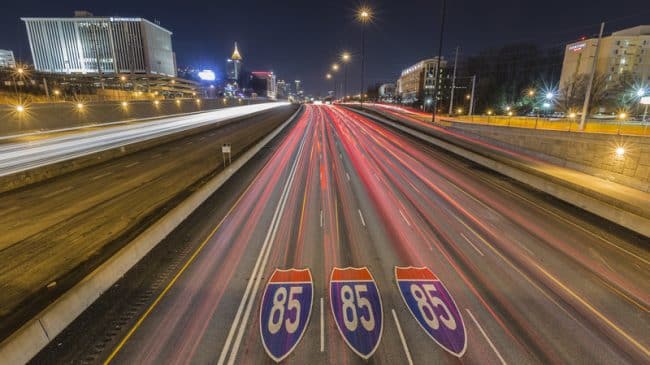Atlanta’s mobility and congestion problems are well known. It has the seventh-worst congestion in the country. The area’s residents waste 51 hours a year sitting in traffic, and those delays cost the region $3.1 billion a year.
Metro Atlanta agencies plan to spend $84 billion over the next 30 years on transportation. Unfortunately, the transportation plans treat far too many projects as stand-alone ventures intended to address single-problem spots.
Atlanta needs a connected transportation network to fix today’s congestion and handle the demands of looming population growth. Right now, Atlanta, with 7,500 lane miles, has one of the most underdeveloped surface street networks of any major U.S. area. With a similar population, Dallas has 10,000 lane miles. Detroit has a smaller population, but more lane miles – 8,600.
Surface streets, or arterials, are key to traveling within cities and also provide alternatives to congested freeways. Today, an accident on I-285 creates major congestion in part because there is no alternate route.
A new Reason Foundation plan, “Practical Strategies for Increasing Mobility in Atlanta” (https://reason.org/news/show/1013512.html), would build 11 primary arterials throughout the metro area. One would connect Marietta with Norcross, creating a quality alternative to I-285 on the Northside. Another would connect Union City with Smyrna, forming a north-south route to complement I-285 on the Westside. A third would connect Doraville with Johns Creek.
The surface streets, combined with managed lanes on the area’s highways, would form the basis of a network connecting key parts of the city and region.
A tunnel would run from the intersection of I-675 and I-285 to the intersection of Ga. 400 and I-85. Managed lanes, variably-priced toll lanes like those on I-85 in Gwinnett County, would be built on most Atlanta freeways including all of I-285, I-20 east and west of downtown, and Ga. 400 from Atlanta to McFarland Road. This would give the area’s drivers and buses congestion-free trips 24 hours a day, seven days a week.
With a beefed-up network of connected streets and managed freeway lanes, metro Atlanta could build a comprehensive Bus Rapid Transit and express bus network at a fraction of the cost of proposed light rail lines.
But how does Atlanta pay for these transportation improvements? The Reason Foundation report finds that public-private partnerships could be used to build and operate the toll lanes. The private sector would deliver more than $7 billion to help build the lanes in metro Atlanta.

